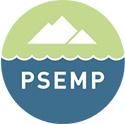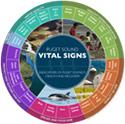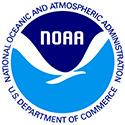Our Mission: Assess the effects of toxic contaminants on marine and anadromous species to help guide efforts to protect fish and shellfish health, ensure seafood safety, and promote ecosystem recovery.
The Washington Department of Fish and Wildlife's Toxics Biological Observation System (TBiOS) team monitors the geographic extent and magnitude of toxic contaminants in fish and other organisms living in Puget Sound, Washington's portion of the Salish Sea. Our studies are designed to evaluate and track complex patterns of pollution across Puget Sound by using a number of indicator species representing a wide range of feeding strategies, movement patterns, and habitats.
We use data generated from these studies, some dating back to 1989, to evaluate the effects of these contaminants on the health of the Salish Sea's organisms. Toxic chemicals covering a wide range of sources, toxicity, persistence, and bioaccumulation are measured to help us to understand where the problem areas are, and whether conditions are getting better or worse. For more information, view a list of our publications and most recent results.
We also share our data with Washington's Department of Health to evaluate the safety of Salish Sea seafood for human consumption, and some data are used in the Puget Sound Partnership's Toxics in Fish Vital Sign to help track Puget Sound recovery.
TBiOS is a key participant in the Puget Sound Ecosystem Monitoring Program (PSEMP), and we coordinate our research activities with our PSEMP partners tracking marine water quality and contaminants in Puget Sound sediments. TBiOS staff also work closely with our long-term research partners at NOAA Fisheries on a number of projects related to the health of the Puget Sound and the Salish Sea.
Program staff
Sandie O'Neill is a senior research scientist and leader of the Toxics Biological Observation System (TBiOS) team. She joined the team in 1989 and her research primarily focuses the relationship between species life history and contaminant exposure and the impact of contaminants on fish health, especially salmon and steelhead. She received her B.Sc. in Zoology from Memorial University of Newfoundland in 1981 and her M.Sc. in Zoology from the University of British Columbia in 1986.
Research Staff
Andrew Beckman has been working with the TBiOS team since 2021 as a scientific technician, assisting with planning, organizing, and conducting contaminant monitoring projects in the field and lab. Prior to this, he assisted the Washington State Department of Ecology in monitoring toxics in freshwater, conducted creel and salmon spawner surveys for WDFW’s Fisheries Program, and helped to enhance fish habitat in the Skagit River system. Andrew graduated with a B.Sc. from the Evergreen State College in 2004 with a focus in the Natural Sciences.
Andrea Carey is a lead biologist with WDFW’s TBiOS team. Primarily, she focuses on monitoring toxic contaminant exposure and their health impacts in seaward migrating juvenile Chinook salmon from many Puget Sound rivers. Prior to her work with WDFW, Andrea studied maternal transfer and the reproductive effects of legacy contaminants in American eels. Andrea received her B.S. in Biology and her M.S. in Marine Biology, both from the University of Massachusetts – Dartmouth.
Robert J. Fisk is a fish and wildlife biologist who joined the TBiOS team in 2015. Rob conducts a wide range of research and monitoring studies to support TBiOS and agency goals, planning, organizing and implementing field and laboratory activities. Before joining TBiOS, Rob worked for the Washington Cooperative Fish and Wildlife Research Unit at the University of Washington. His work supported various graduate student research projects that focused on the effects of toxic contaminants on fish and wildlife. Rob received his B.Sc. in Aquatic and Fishery Sciences from the University of Washington in 2006.
Wes Flynn is a Research Scientist with WDFW’s Toxics Biological Observation System (TBiOS). His work focuses on monitoring the distribution of environmental contaminants in pelagic and nearshore food webs. Wes’ previous experience broadly focused on the impacts of environmental contaminants on wildlife, including projects evaluating the potential for remediation wetlands to act as ecological traps and the ecological risk associated with PFAS and other organic pollutants.
Louisa Harding is a research scientist with WDFW’s Toxics Biological Observation System (TBiOS) team. She works to monitor contaminants in Puget Sound biota and evaluate their impacts on species health. Prior to working at WDFW, Louisa’s research focused on reproductive physiology and endocrine disruption of juvenile coho salmon and effects of stormwater runoff on Pacific herring embryonic development. Louisa earned her B.A. in Biology and Dance from Kenyon College and her Ph.D. in Aquatic and Fishery Sciences from University of Washington.
Mariko Langness is a senior biologist with WDFW’s TBiOS team. Her work is focused on monitoring toxic contaminants in nearshore marine habitats using transplanted bay mussels under the Washington State Mussel Watch Program. She coordinates this collaborative program, working with a wide network of federal, state and local agencies, tribes, and community science volunteers. Mariko has a B.Sc. degree in Aquatic and Fishery Sciences from the University of Washington (2008).
Danielle Nordstrom is a biologist whose focus is planning, organizing, and executing the biennial WDFW Mussel Watch Survey. She received her B.Sc. in 2015 from The Evergreen State College with an emphasis on marine biology and worked in WDFW’s Salmon and Steelhead Management at WDFW prior to joining the TBiOS team.
Molly Shuman-Goodier is a research scientist focused on understanding the effects of emerging contaminants on marine life in the Salish Sea. Her work centers on developing ecologically relevant, data-driven solutions to inform the remediation and regulation of contaminants, with a goal of safeguarding biodiversity and human health. Molly draws inspiration and perspective from previous roles with the U.S. EPA's Office of Pollution Prevention and Toxics, the International Rice Research Institute (Philippines), the U.S. National Park Service, and the Smithsonian Tropical Research Institute (Panama). She holds a B.S. in Biology (2011) from Eckerd College in St. Petersburg, FL and a Ph.D. in Biology (2019) from Northern Arizona University in Flagstaff, Arizona.
Natasha Winnacott is a fish and wildlife biologist who started working for the TBiOS team in the fall of 2024. Her work focuses on monitoring toxic contaminant exposure in juvenile Chinook salmon throughout Puget Sound. Natasha completed her MSc in Fisheries Biology from California Polytechnic University Humboldt (formerly Humboldt State University) in 2023. Her thesis focused on the spatial and temporal variability of toxin loading in bivalves located in Humboldt Bay, California, to better inform fisheries management of the risk toxins pose to vital aquaculture operations in the Bay.
Program Specialists
Rae Eaton joined the agency in 2024 as the Toxic Contaminants Policy Lead. They work closely with the TBiOS team to ensure WDFW data on toxic chemicals informs state policies to clean up toxic contaminants and reduce their impacts to Washington ecosystems. Rae holds a Ph.D. in Chemistry from the University of Washington.
Lisa Hoang is the toxics communications specialist for WDFW. Lisa accompanies the TBiOS team on surveys and assists in the lab to document scientific work and develop visual narratives. She also participates in multi-agency efforts and outreach events addressing toxic contamination. Lisa has a background in communications and holds a B.S. in Biology.

















